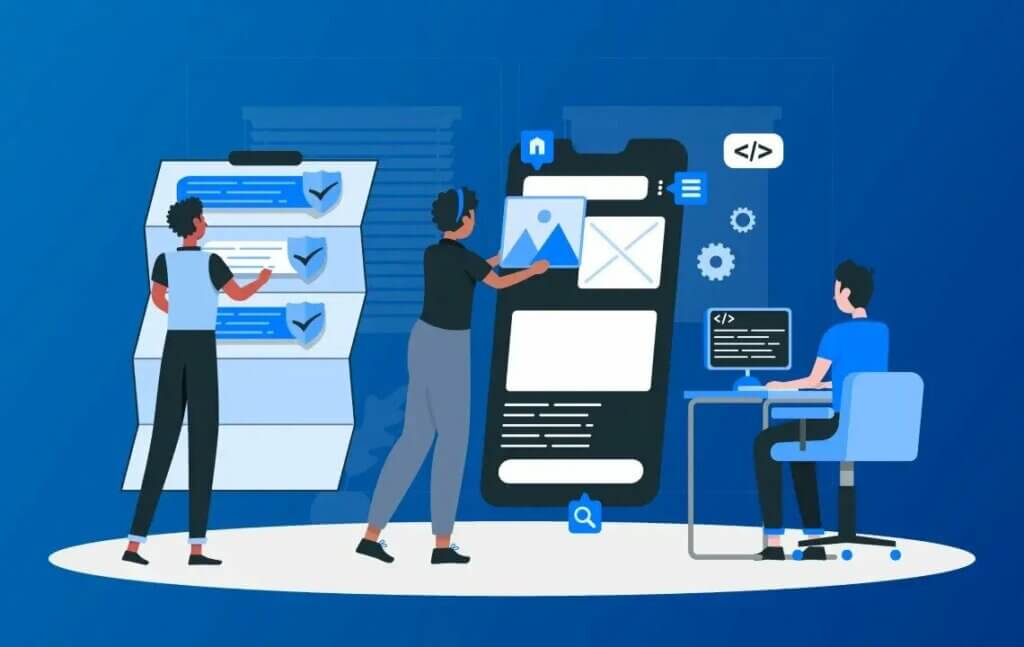Understanding the App Development Process: From Idea to Launch
In today’s fast-paced digital landscape, web and mobile applications have become an integral part of our daily lives. From staying connected with loved ones to managing finances and accessing entertainment, apps have transformed the way we interact with technology.
Behind every successful app, there’s a well-thought-out development process that takes an idea from conception to launch. In this blog post, we will guide you through the step-by-step journey of creating an app, from the initial concept to its grand release.

1. Idea Generation and Market Research
Every app starts with an idea. Whether it’s a solution to a common problem or a novel concept that fills a gap in the market, the idea forms the foundation of your app. Once you have your idea, conduct thorough market research to understand your target audience, competitors, and market demand. Identify the pain points your app aims to address and gather insights that will inform the app’s features and functionality.
2. Defining the Scope and Objectives
After validating your idea through market research, it’s crucial to define the scope and objectives of your app project. Outline the core features and functionalities your app will have and prioritize them based on their importance and complexity. Setting clear objectives helps keep the development process on track and ensures that the final product meets your users’ needs.
3. Wireframing and Prototyping
With a well-defined scope, it’s time to create wireframes and prototypes of your app. Wireframes are basic visual representations of the app’s layout and design, allowing you to map out the user interface and user experience. Prototypes, on the other hand, provide an interactive mockup of the app, giving you a feel for its functionality. These early stages help iron out design issues and gather feedback from stakeholders and potential users.
4. Design and User Experience
The visual appeal and user experience are critical factors that can make or break an app’s success. Collaborate with skilled designers to create an intuitive and visually appealing interface. Pay attention to colour schemes, typography, and iconography that align with your brand identity. Focus on delivering a seamless and user-friendly experience that keeps users engaged and satisfied.
5. Development
The development phase brings your app to life. Depending on the platform (iOS, Android, or both) and the chosen technology stack, developers will start building the app’s frontend and backend functionalities. Agile development methodologies, such as Scrum, are often employed to ensure flexibility and continuous improvement throughout the development process.
6. Testing and Quality Assurance
Thorough testing is indispensable to guarantee a bug-free and reliable app. Conduct comprehensive testing, including functional testing, performance testing, security testing, and compatibility testing across various devices and operating systems. Address any issues discovered during this phase to refine and enhance the app’s performance.
7. Beta Testing and Feedback
Before launching the app to the public, conduct beta testing to get feedback from real users. Invite a select group of testers to use the app and provide valuable insights. Their feedback will help you identify any remaining bugs and make additional improvements based on user preferences.
8. Deployment and Launch
Congratulations! Your app is now ready for deployment and launch. Submit your app to the respective app stores (Apple App Store and Google Play Store) and comply with their submission guidelines. Prepare compelling app descriptions, screenshots, and promotional materials to attract users. A well-planned marketing strategy will play a crucial role in gaining initial traction and user adoption.
9. Post-Launch Support and Updates
The journey doesn’t end with the launch; it’s only the beginning. Continuously monitor the app’s performance, user feedback, and analytics. Address user-reported issues promptly and release updates with new features and enhancements to keep the app relevant and competitive in the ever-evolving app market.
10. Marketing and Promotion
Effectively marketing your app is essential to reach a wider audience. Utilise various marketing channels, including SEO, PPC ads, social media, influencer collaborations, content marketing, and app store optimisation (ASO), to boost your app’s visibility and downloads.
Summing Up the App Development Process
Developing a successful app is a process that requires creativity, technical expertise, and thorough planning. From the initial idea to the final launch, each stage contributes to shaping an app that resonates with users and meets their needs. By understanding and following these steps, you can embark on your app development journey with confidence, and with the potential to make a significant impact in the app market.




